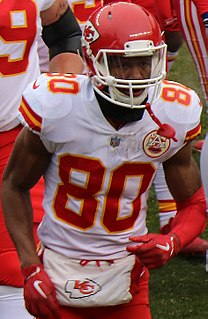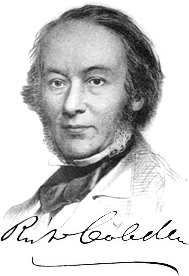
The Emancipation Proclamation, or Proclamation 95, was a presidential proclamation and executive order issued by United States President Abraham Lincoln on January 1, 1863. It changed the federal legal status of more than 3.5 million enslaved African Americans in the designated areas of the South from slave to free. As soon as a slave escaped the control of the Confederate government, by running away or through advances of federal troops, the former slave became free. Ultimately, the rebel surrender liberated and resulted in the proclamation's application to all of the designated former slaves. It did not cover slaves in Union areas that were freed by state action. It was issued as a war measure during the American Civil War, directed to all of the areas in rebellion and all segments of the executive branch of the United States.

Robert Augustus Toombs was an American lawyer, planter, and politician from Georgia who became one of the organizers of the Confederacy and served as its first Secretary of State. He served in Jefferson Davis' cabinet as well as in the Confederate States Army, but later became one of Davis' critics. He fled the United States after the Confederate defeat, returning in 1867 after his daughter's death. He regained political power in Georgia as Congressional Reconstruction ended.

William Lloyd Garrison was a prominent American abolitionist, journalist, suffragist, and social reformer. He is best known as the editor of the abolitionist newspaper The Liberator, which he founded with Isaac Knapp in 1831 and published in Massachusetts until slavery was abolished by Constitutional amendment after the American Civil War. He was one of the founders of the American Anti-Slavery Society, and promoted "immediate emancipation" of slaves in the United States.

John Wilkes was a British radical, journalist, and politician.

Matthew Hale Carpenter was an American attorney and U.S. Senator representing the state of Wisconsin. He served in the Senate from 1869 to 1875 and again from 1879 to 1881. Recognized as an authority on constitutional law, he made some of the most important legal arguments of 19th-century America. Carpenter presented cases before the U. S. Supreme Court involving such matters as states' rights and regulation of corporations.

Clement Claiborne Clay, also known as C. C. Clay, Jr., was a United States Senator (Democrat) from the state of Alabama from 1853 to 1861, and a Confederate States Senator from Alabama from 1862 to 1864. His portrait appeared on the Confederate one-dollar note.
Abraham Lincoln's position on slavery is one of the most discussed aspects of his life. Lincoln often expressed moral opposition to slavery in public and private. Initially, he attempted to bring about the eventual extinction of slavery by stopping its further expansion into any U.S. territory and by proposing compensated emancipation in the early part of his presidency. Lincoln stood by the Republican Party's platform of 1860 stating that slavery should not be allowed to expand into any more U.S. territories. He worried that the extension of slavery in new western lands could block "free labor on free soil."

M. Jeff Thompson was a senior officer of the Missouri State Guard who commanded cavalry in the Trans-Mississippi Theater of the American Civil War. The CSS General M. Jeff Thompson was named after him.

Mary Smith Peake, born Mary Smith Kelsey, was an American teacher, humanitarian and a member of the black elite in Hampton, best known for starting a school for the children of former slaves starting in the fall of 1861 under what became known as the Emancipation Oak tree in present-day Hampton, Virginia near Fort Monroe. The first teacher hired by the American Missionary Association, she was a associated with its later founding of Hampton University in 1868.

The North Star was a nineteenth-century anti-slavery newspaper published from the Talman Building in Rochester, New York by abolitionist Frederick Douglass. The paper commenced publication on December 3, 1847 and ceased as The North Star in June 1851 when it merged with Gerrit Smith's Liberty Party Paper to form Frederick Douglass' Paper. The North Star's slogan was "Right is of no Sex—Truth is of no Color—God is the Father of us all, and we are all Brethren."
Popular opposition to the American Civil War, which lasted from 1861 to 1865, was widespread. Although there had been many attempts at compromise prior to the outbreak of war, there were those who felt it could still be ended peacefully or did not believe it should have occurred in the first place. Opposition took the form of both those in the North who believed the South had the right to be independent and those in the South who wanted neither war nor a Union advance into the newly declared Confederate States of America.

The Southern bread riots were events of civil unrest in the Confederacy during the American Civil War, perpetrated mostly by women in March and April 1863. During these riots, which occurred in cities throughout the South, women and men violently invaded and looted various shops and stores.
Adolphus Peter "A. P." Elkin CMG was an Anglican clergyman, an influential Australian anthropologist during the mid twentieth century and a proponent of the assimilation of Indigenous Australians.

Sir John Hobbis Harris was an English missionary, campaigner against slavery and Liberal Party politician.

Slavery in Maryland lasted around 200 years, from its beginnings in 1642 when the first Africans were brought as slaves to St. Mary's City, Maryland, to then ways similar to neighboring Virginia. The early settlements and population centers of the province tended to cluster around the rivers and other waterways that empty into the Chesapeake Bay. Maryland planters cultivated tobacco as the chief commodity crop, as the market was strong in Europe. Tobacco was labor-intensive in both cultivation and processing, and planters struggled to manage workers as tobacco prices declined in the late 17th century, even as farms became larger and more efficient. At first, indentured servants from England supplied much of the necessary labor but, as their economy improved at home, fewer made passage to the colonies. Maryland colonists turned to importing indentured and enslaved Africans to satisfy the labor demand.

Sir Charles Wentworth Dilke, 2nd Baronet, PC was an English Liberal and Radical politician. A republican in the early 1870s, he later became a leader in the radical challenge to Whig control of the Liberal Party, making a number of important contributions, including the legislation increasing democracy in 1883-1885, his support of the growing labour and feminist movements and his prolific writings on international affairs.
The Second Emancipation Proclamation is the term applied to an envisioned executive order that Martin Luther King Jr. and other leaders of the Civil Rights Movement enjoined President John F. Kennedy to issue. As the Emancipation Proclamation was an executive order issued by President Abraham Lincoln to free all slaves being held in states at war with the Union, the envisioned "Second Emancipation Proclamation" was to use the powers of the executive office to strike a severe blow to segregation.

Jehu Femi Chesson II is an American football wide receiver for the Washington Redskins of the National Football League (NFL). He played college football at Michigan, and was selected by the Kansas City Chiefs in the fourth round of the 2017 NFL Draft. He owns the school record for most receiving touchdowns in a game, tied with Derrick Alexander with four. His 207 receiving yards against Indiana during the 2015 season also ranks as the third-highest total in school history.



















